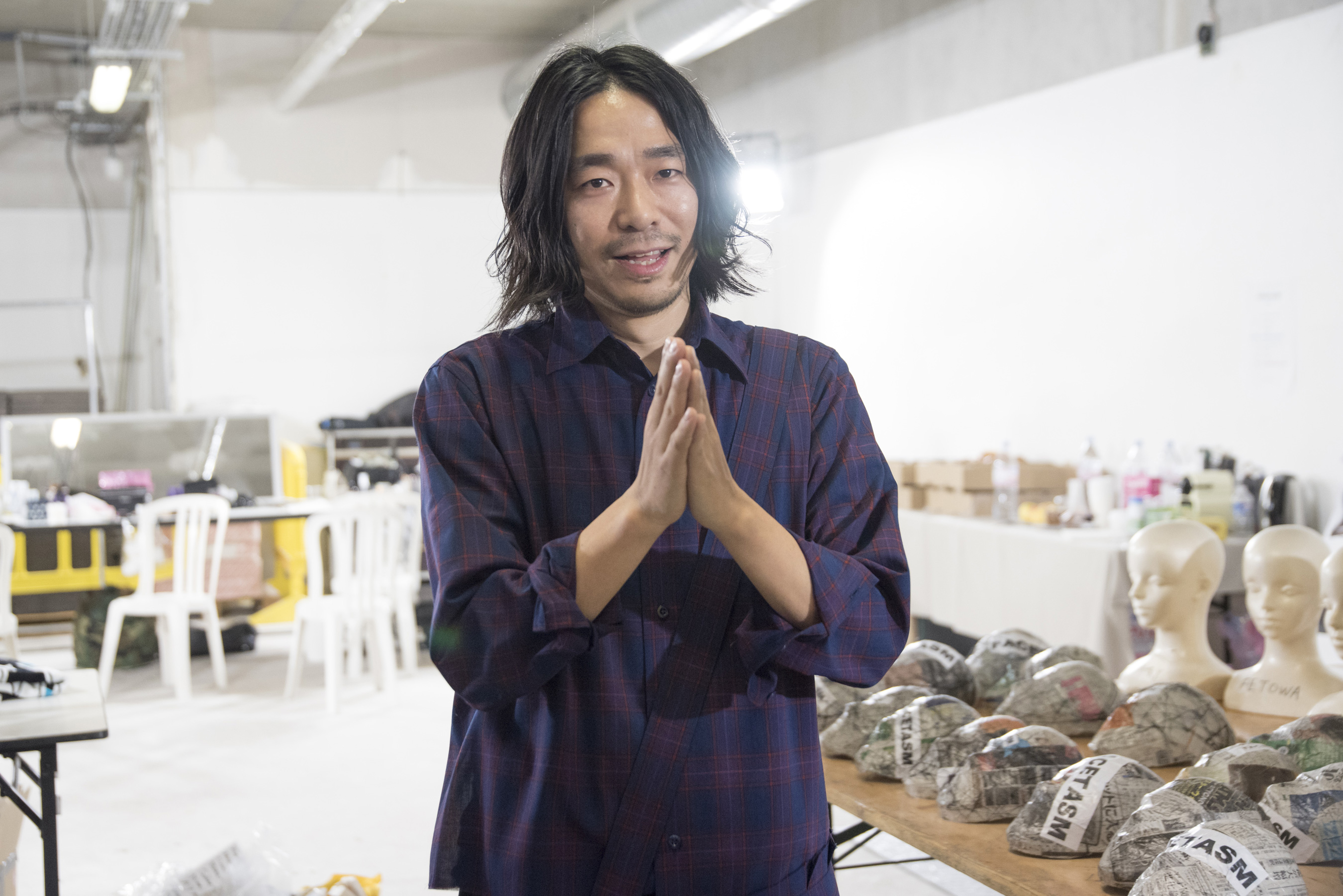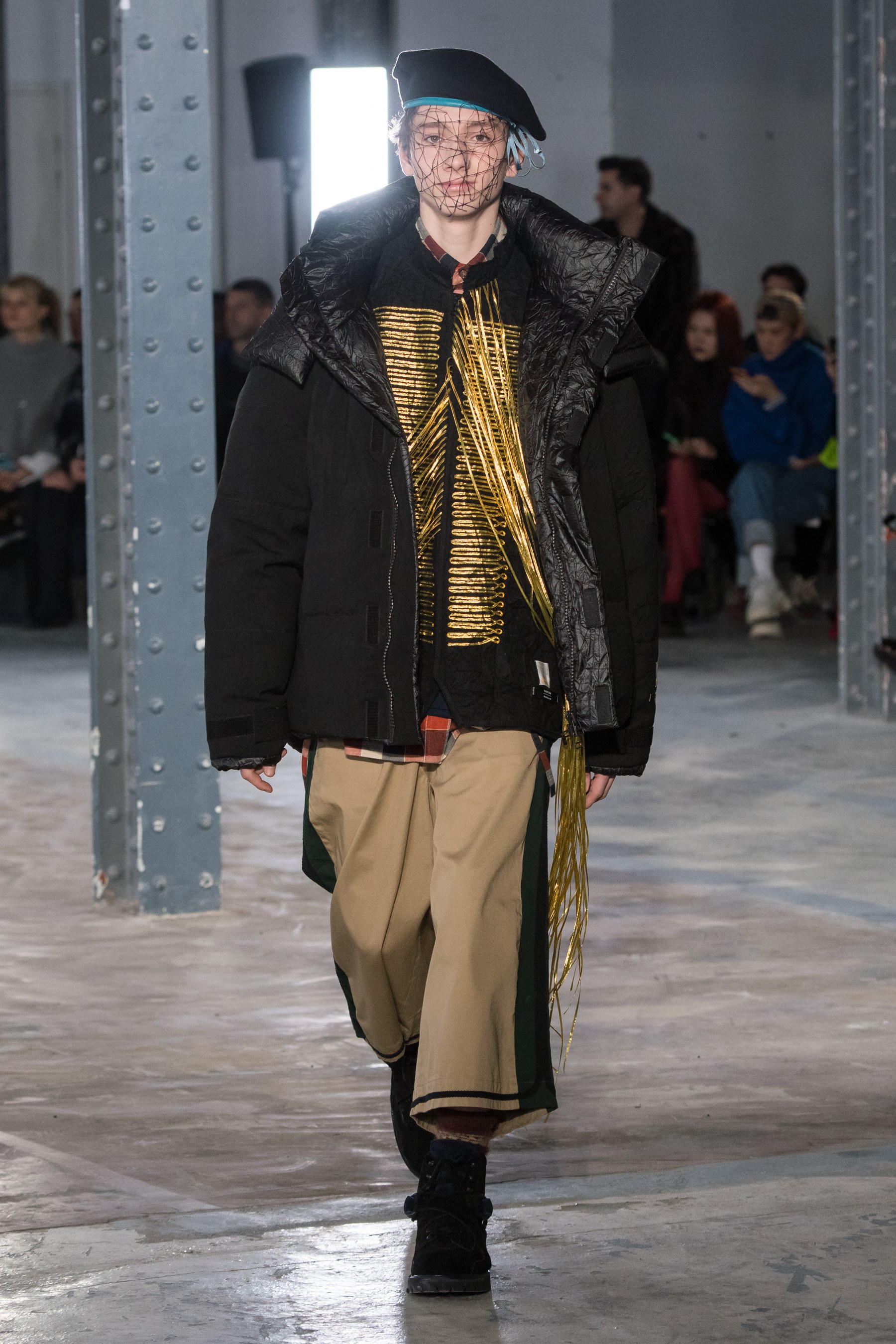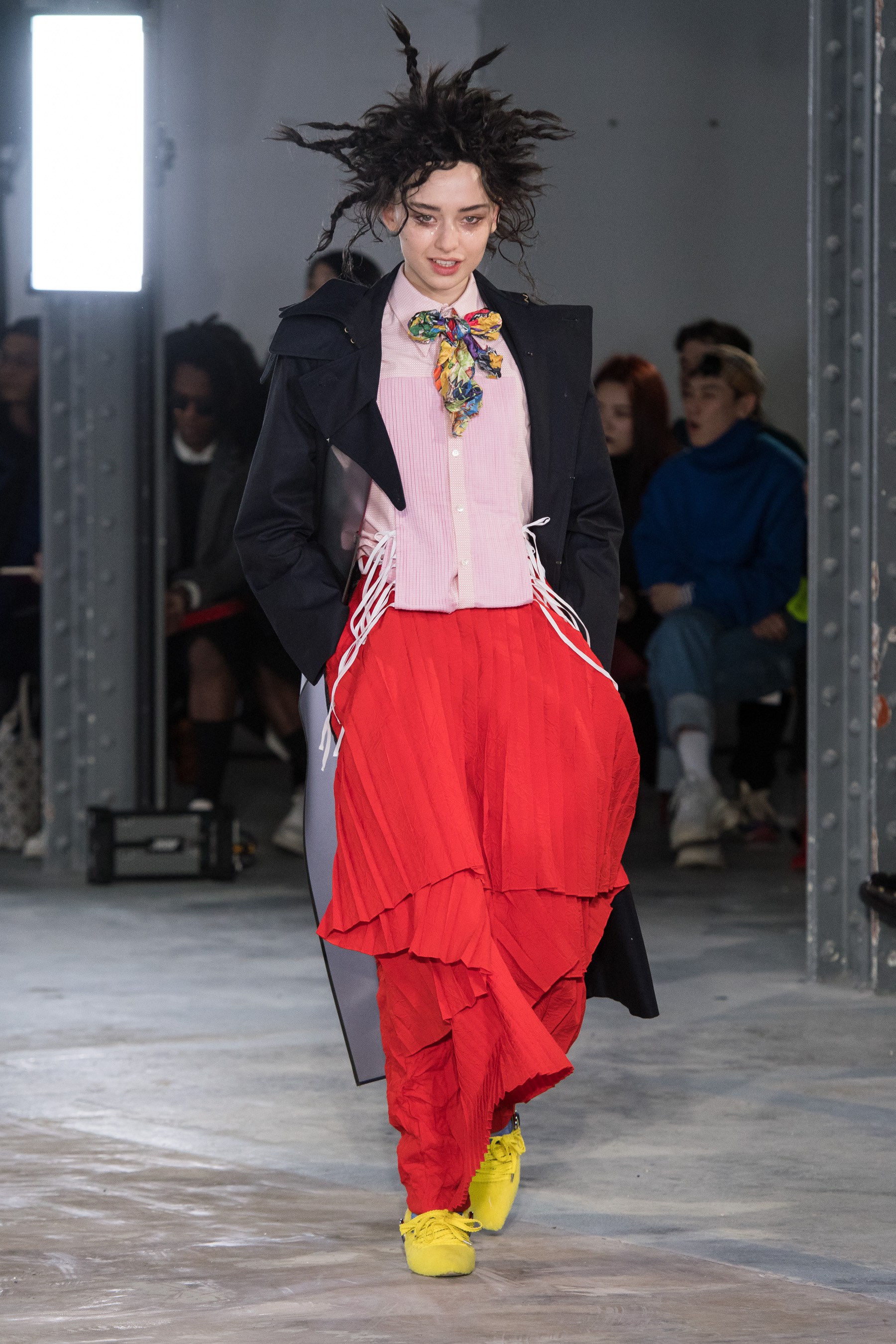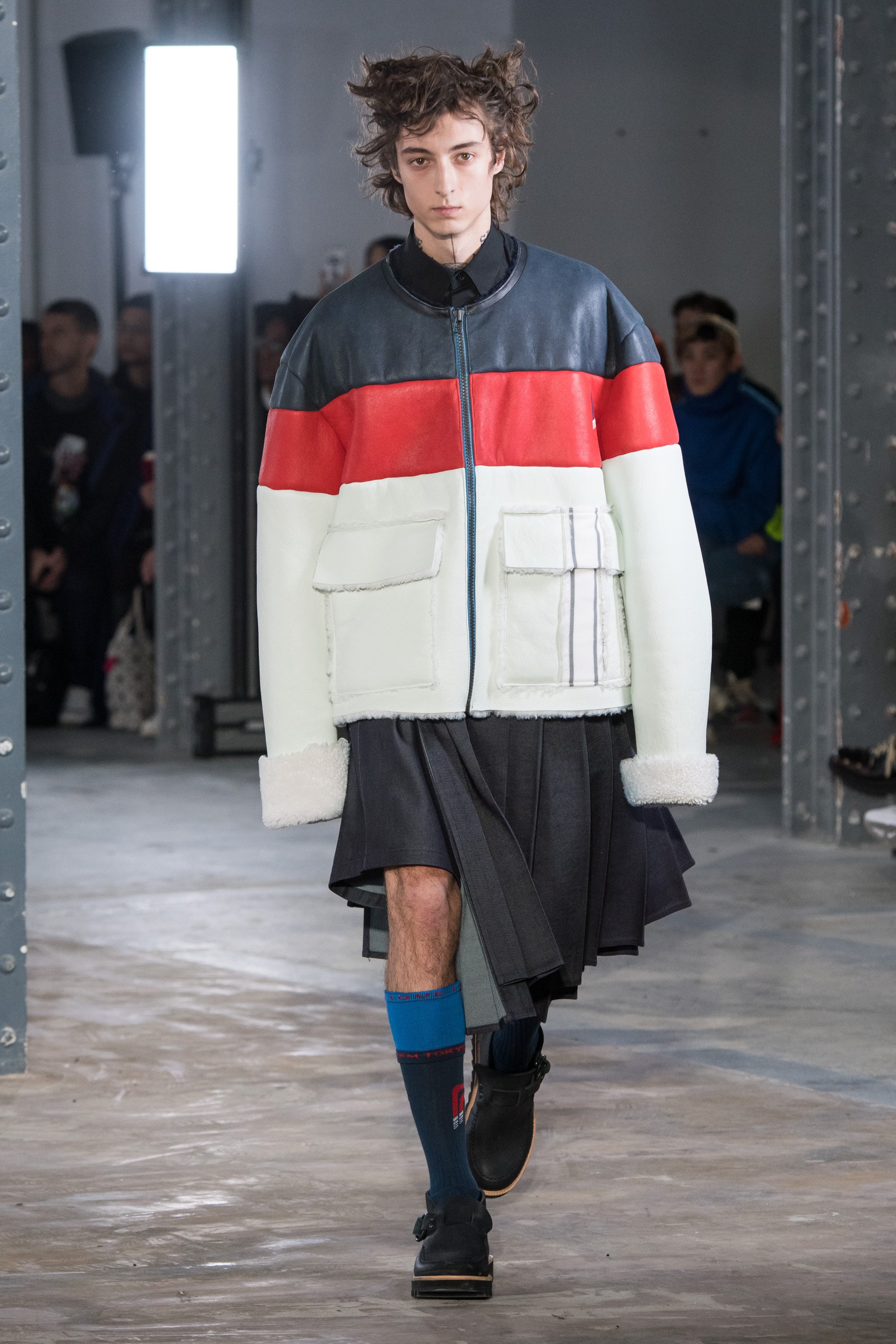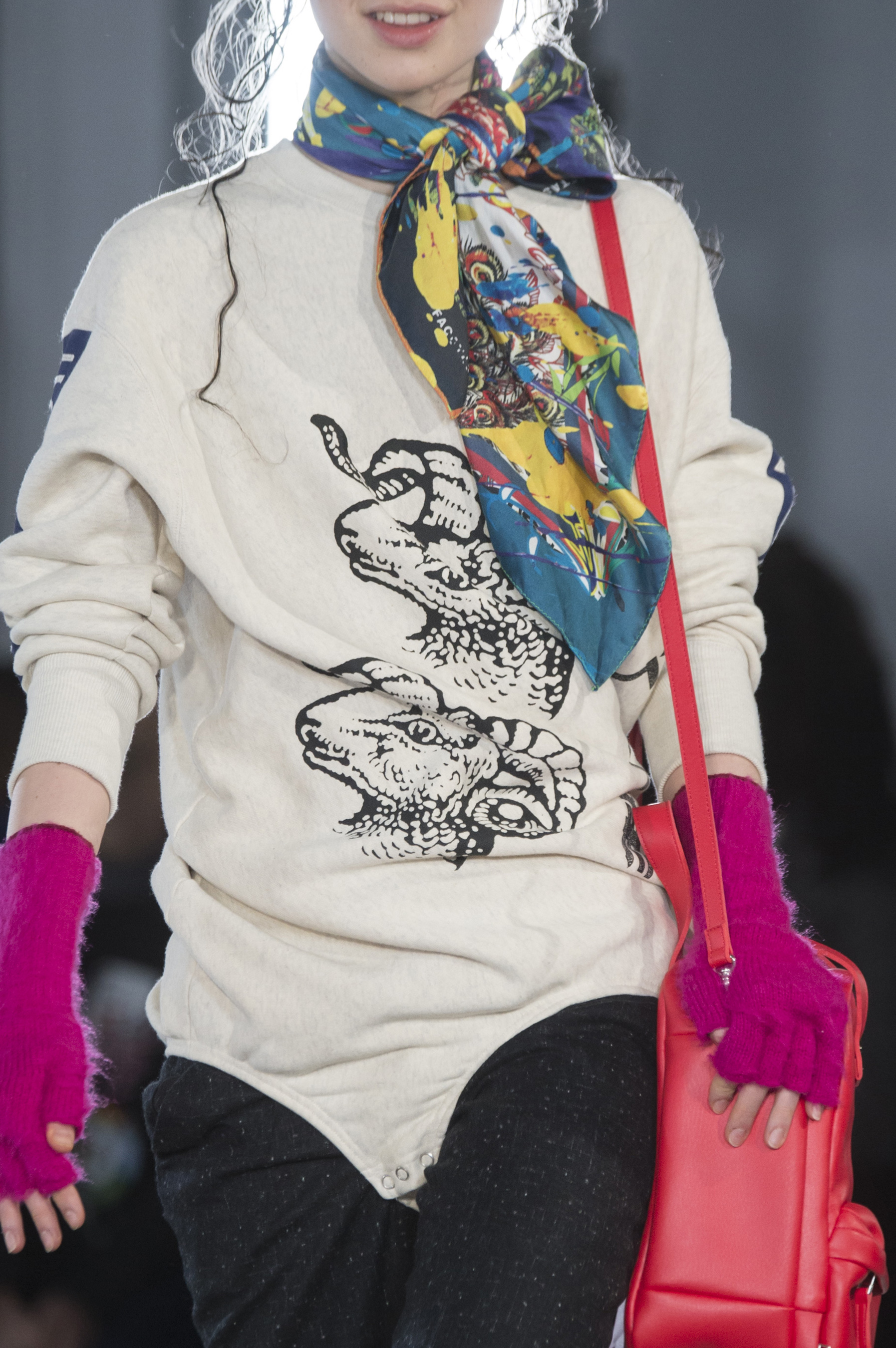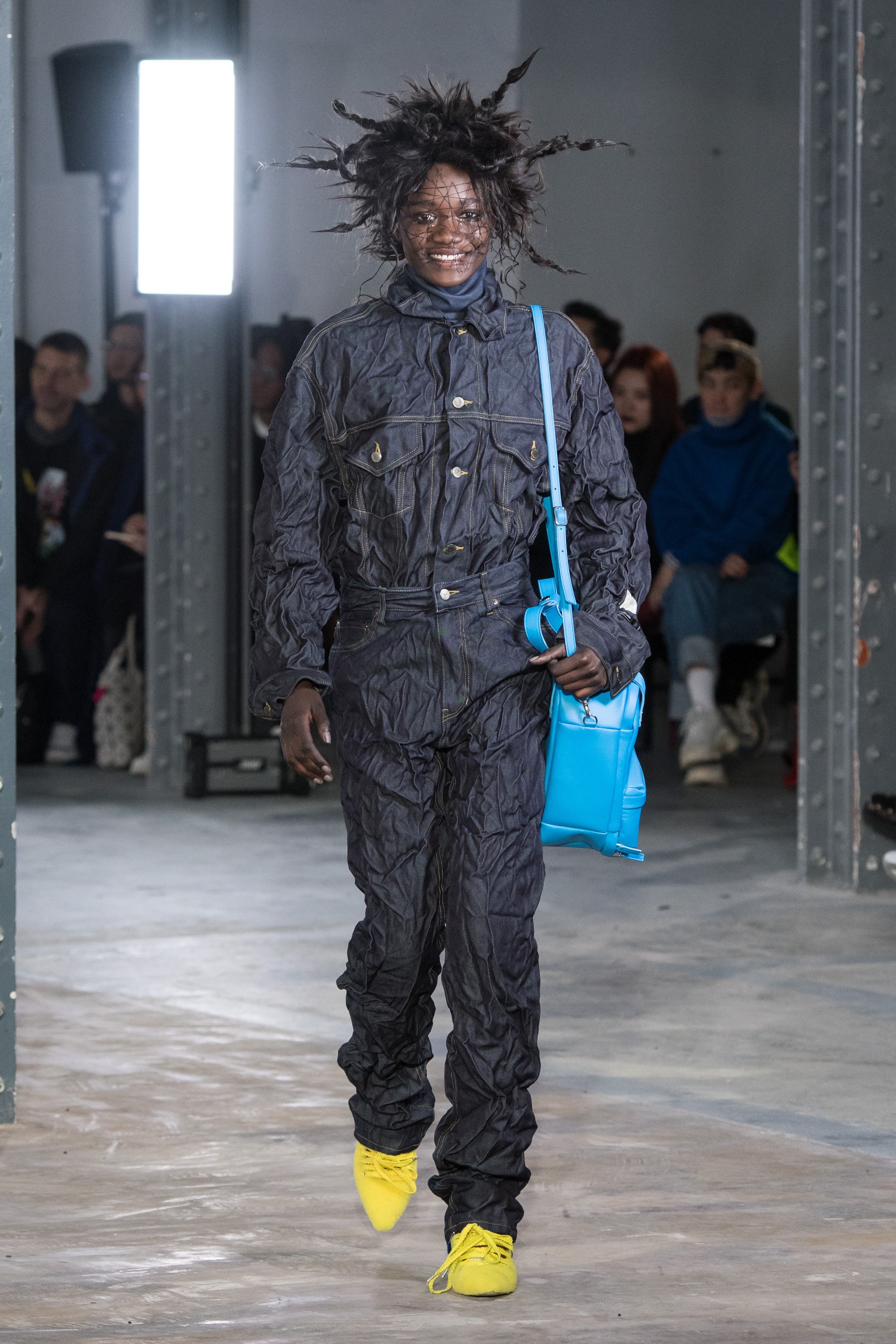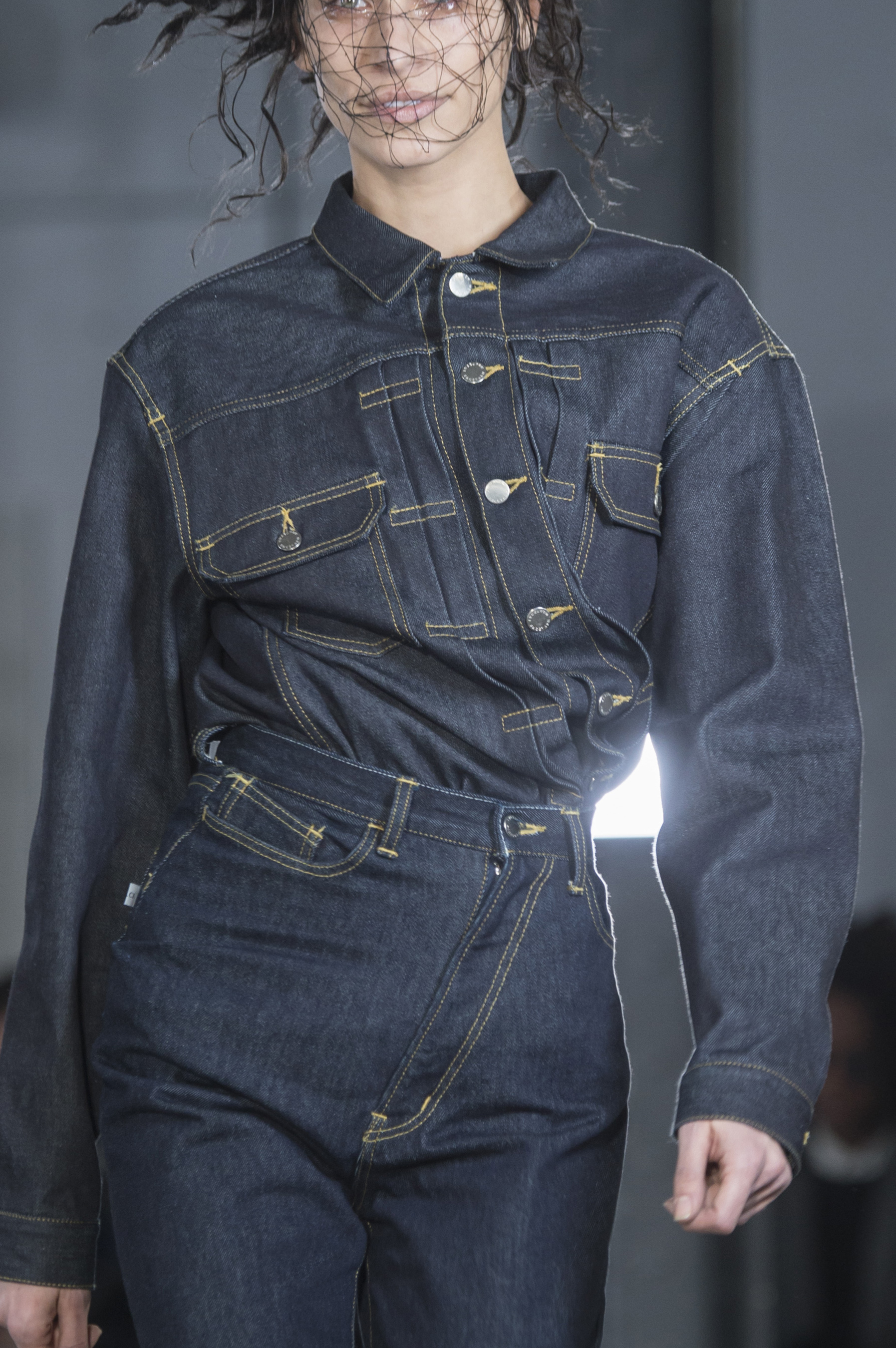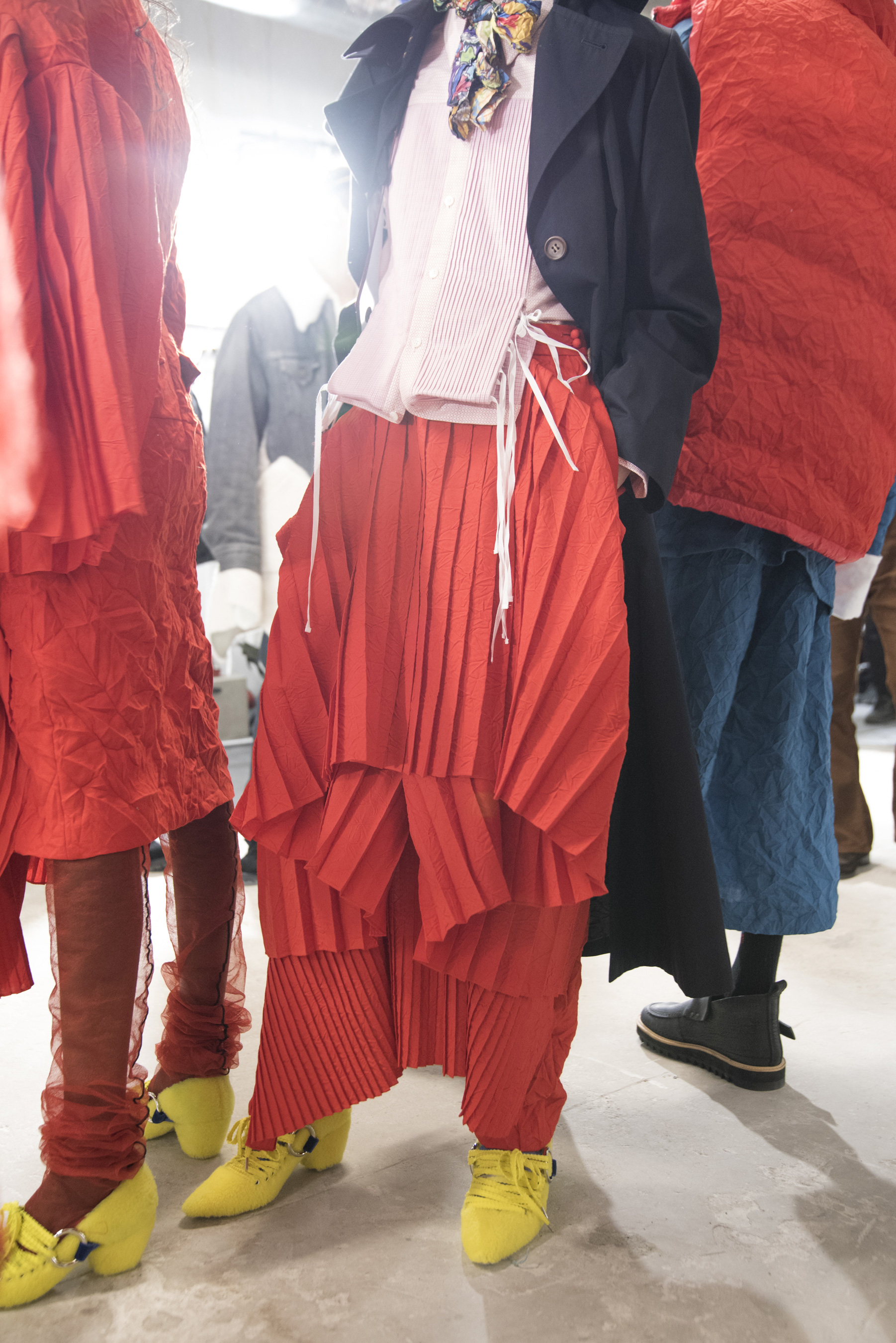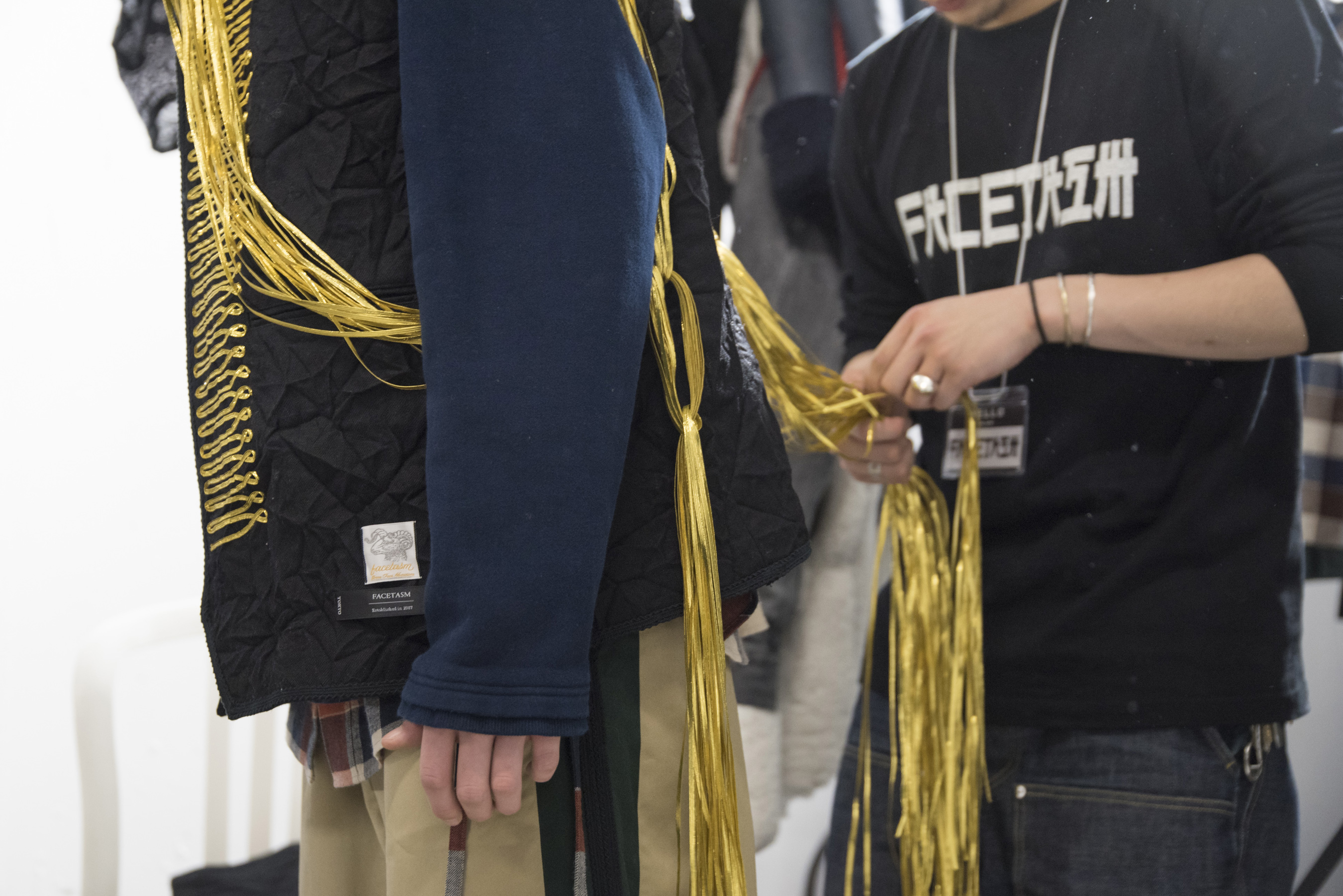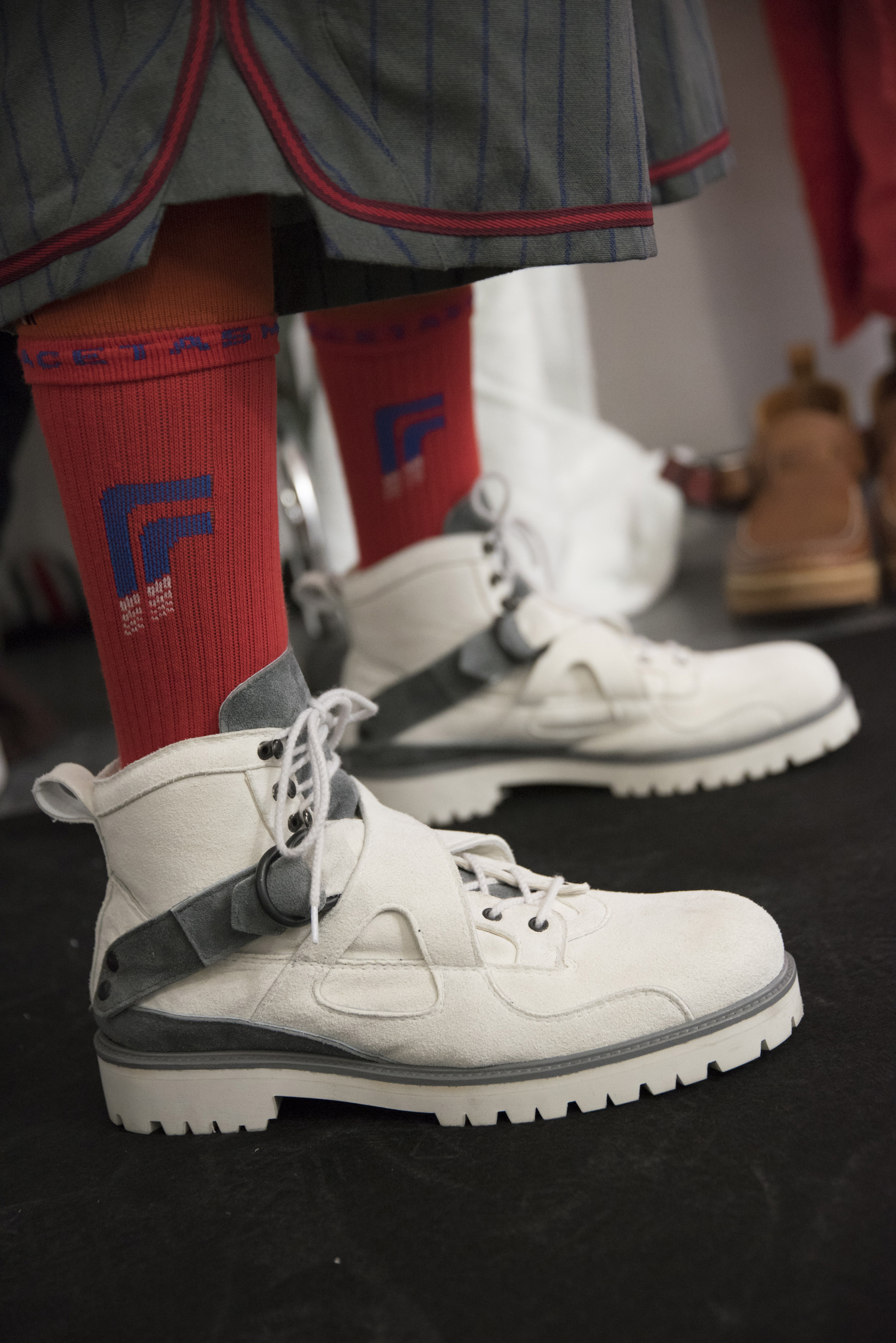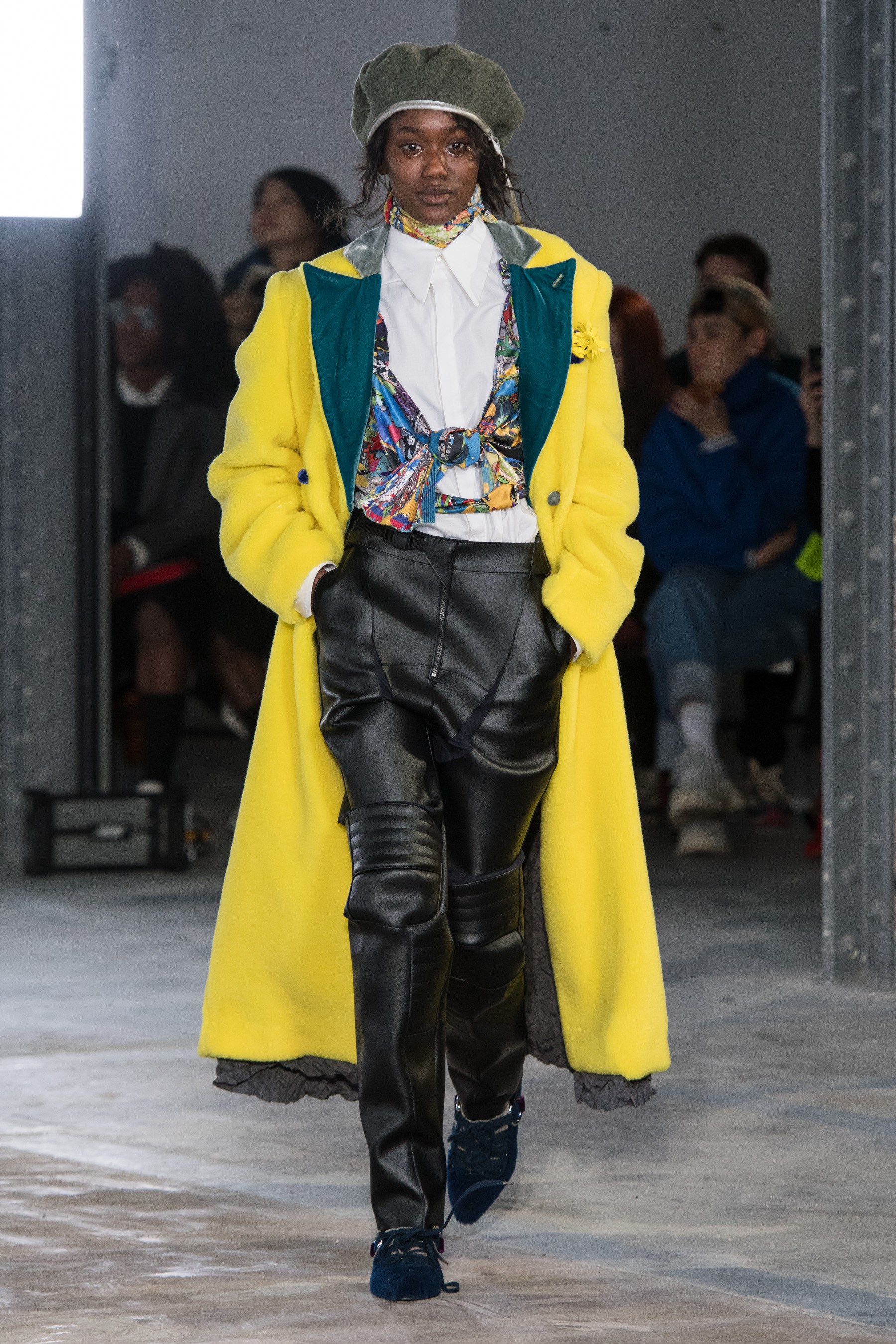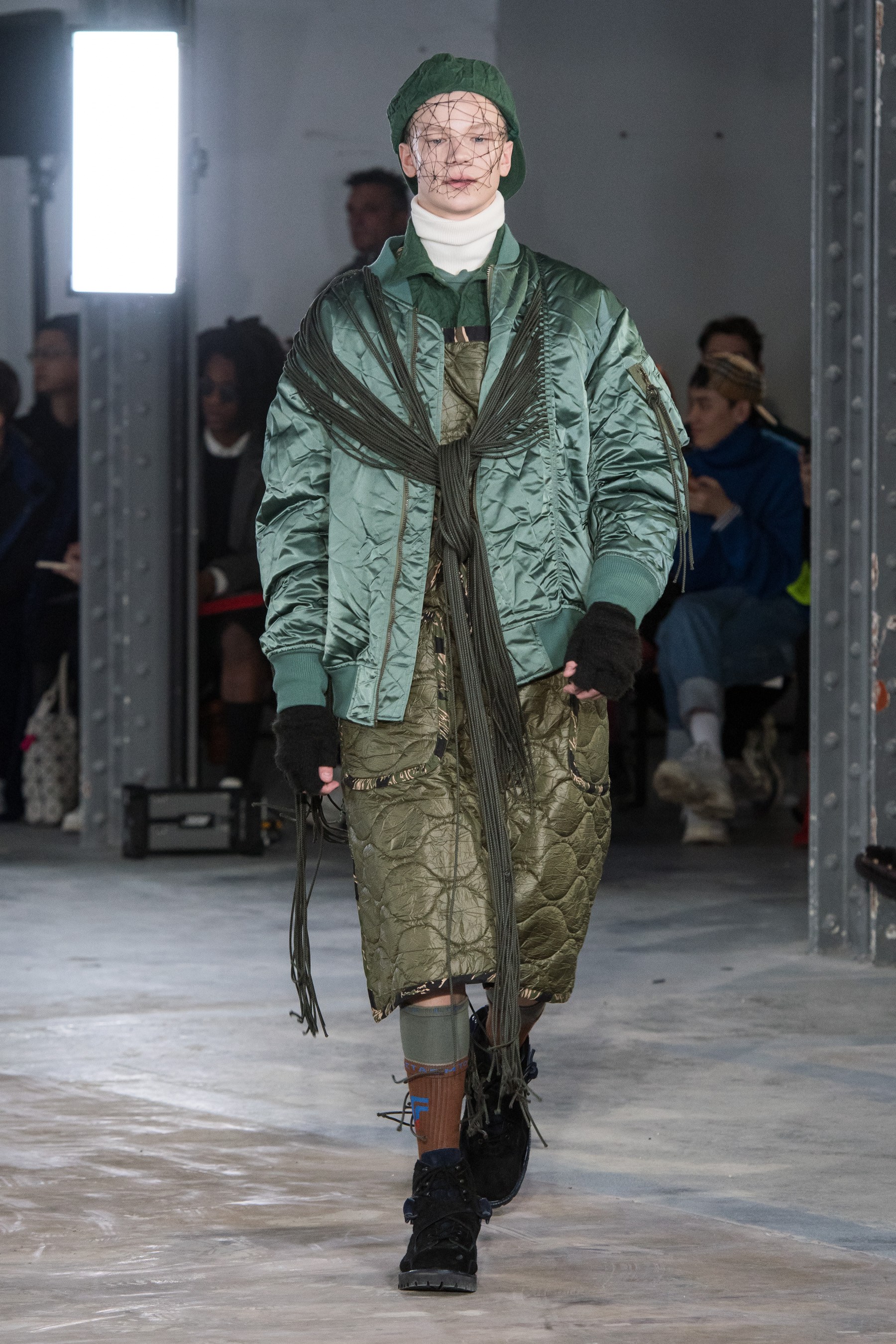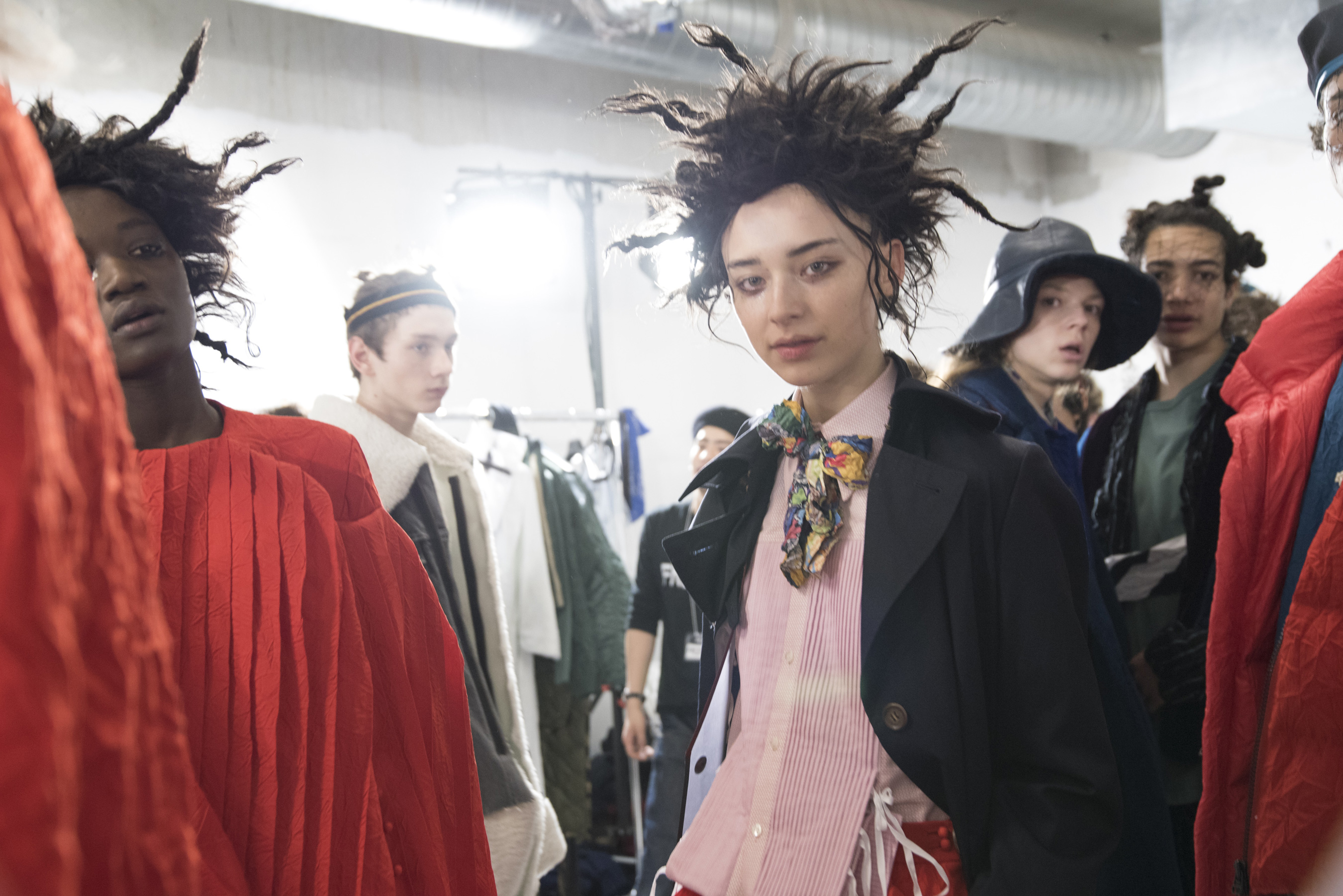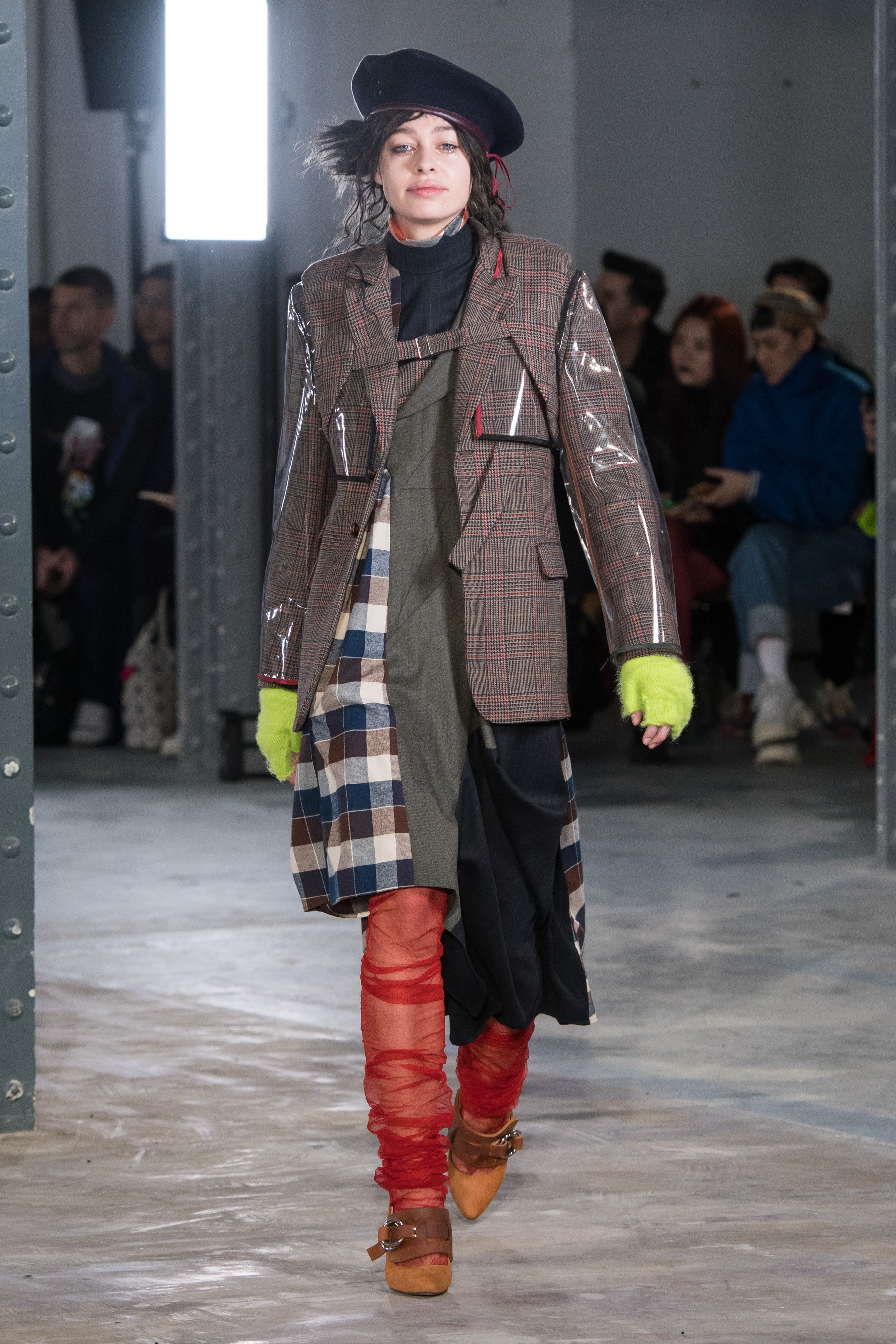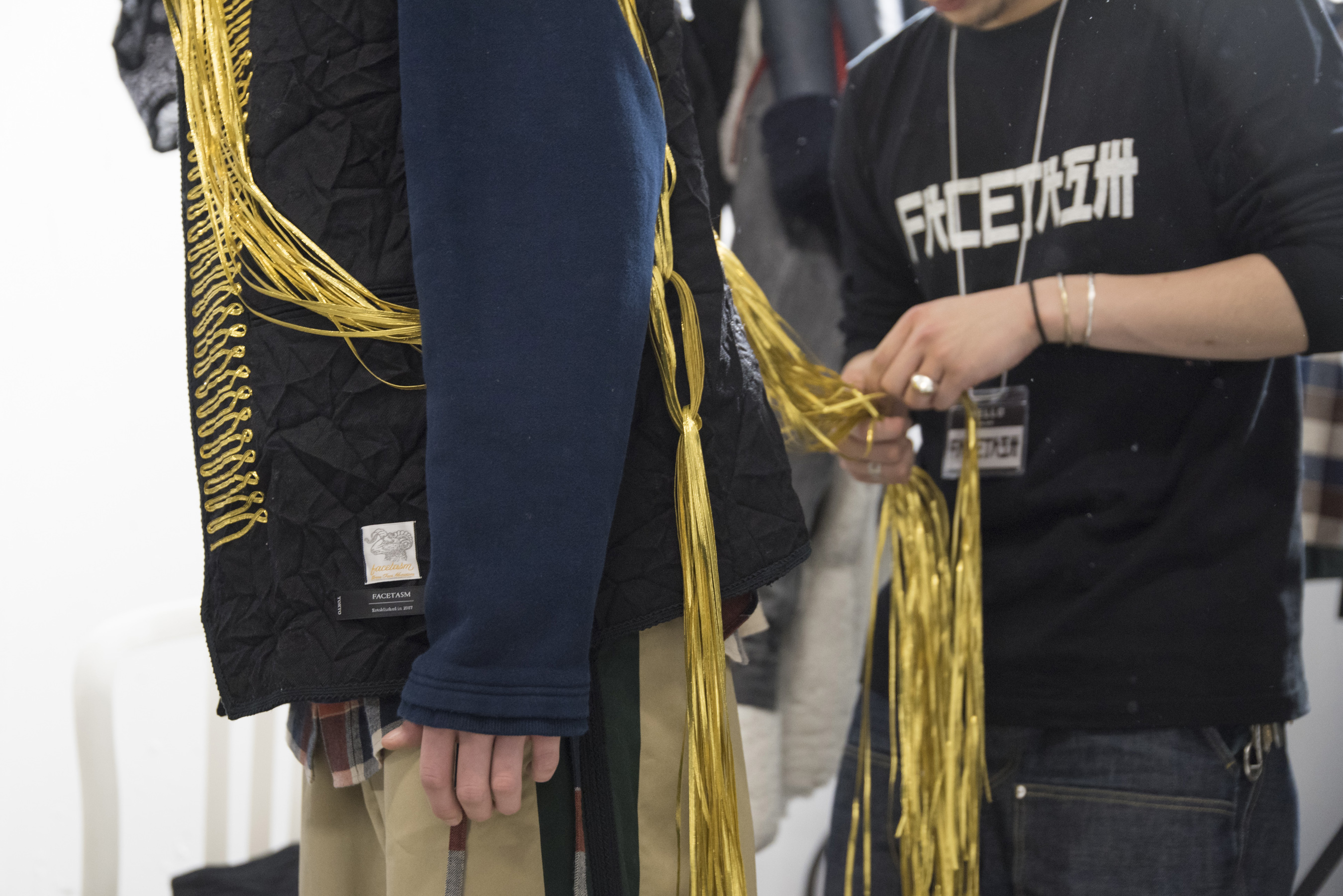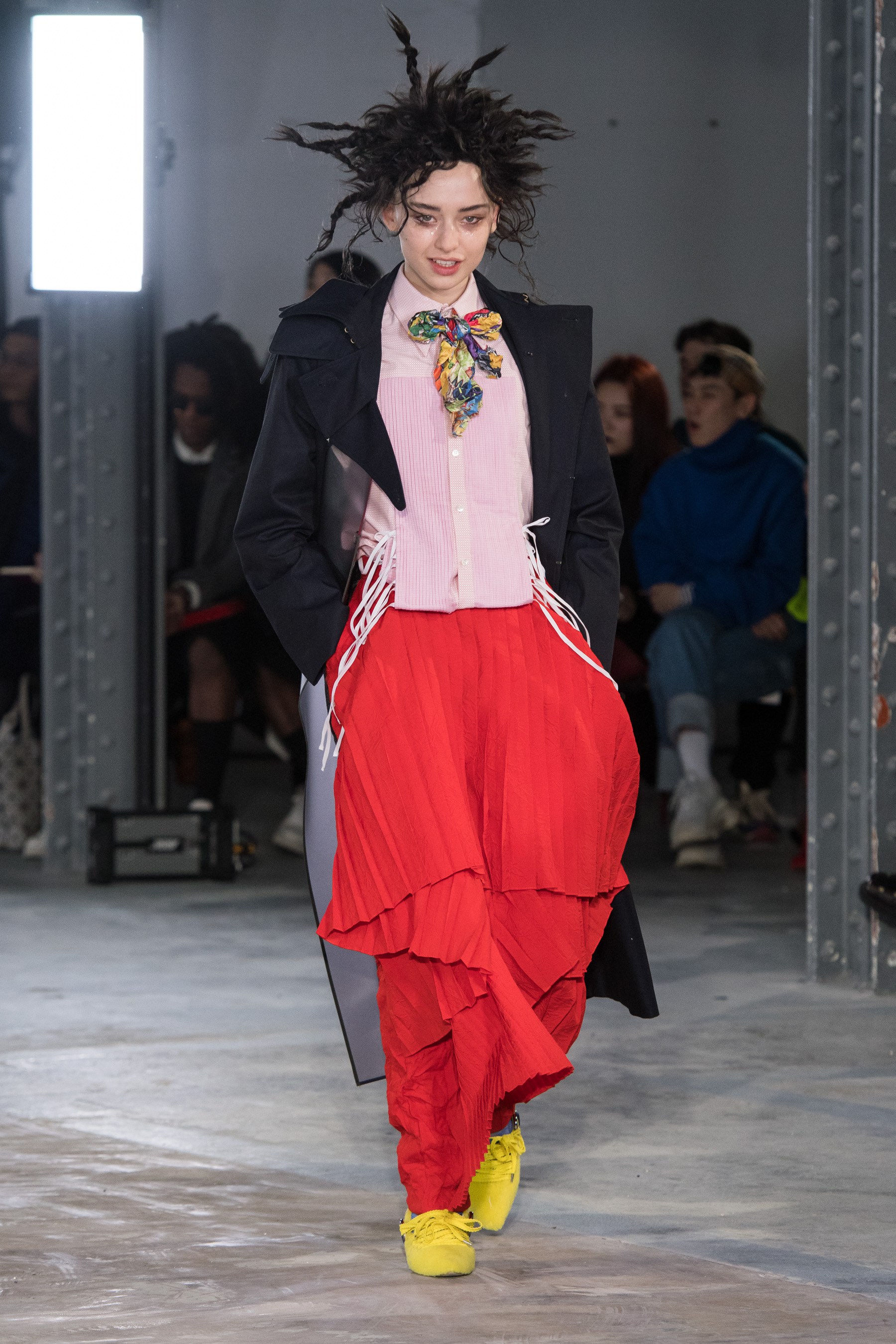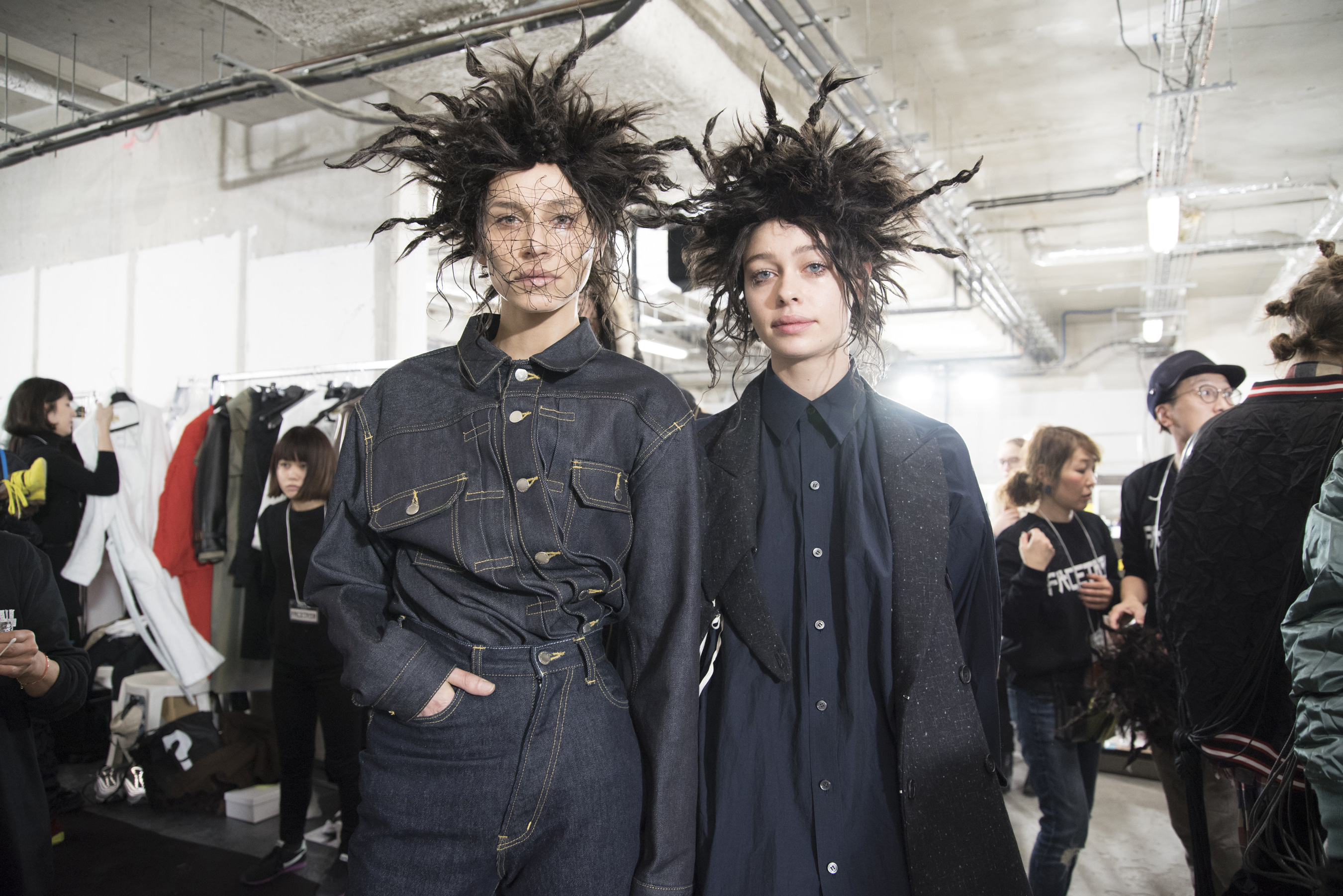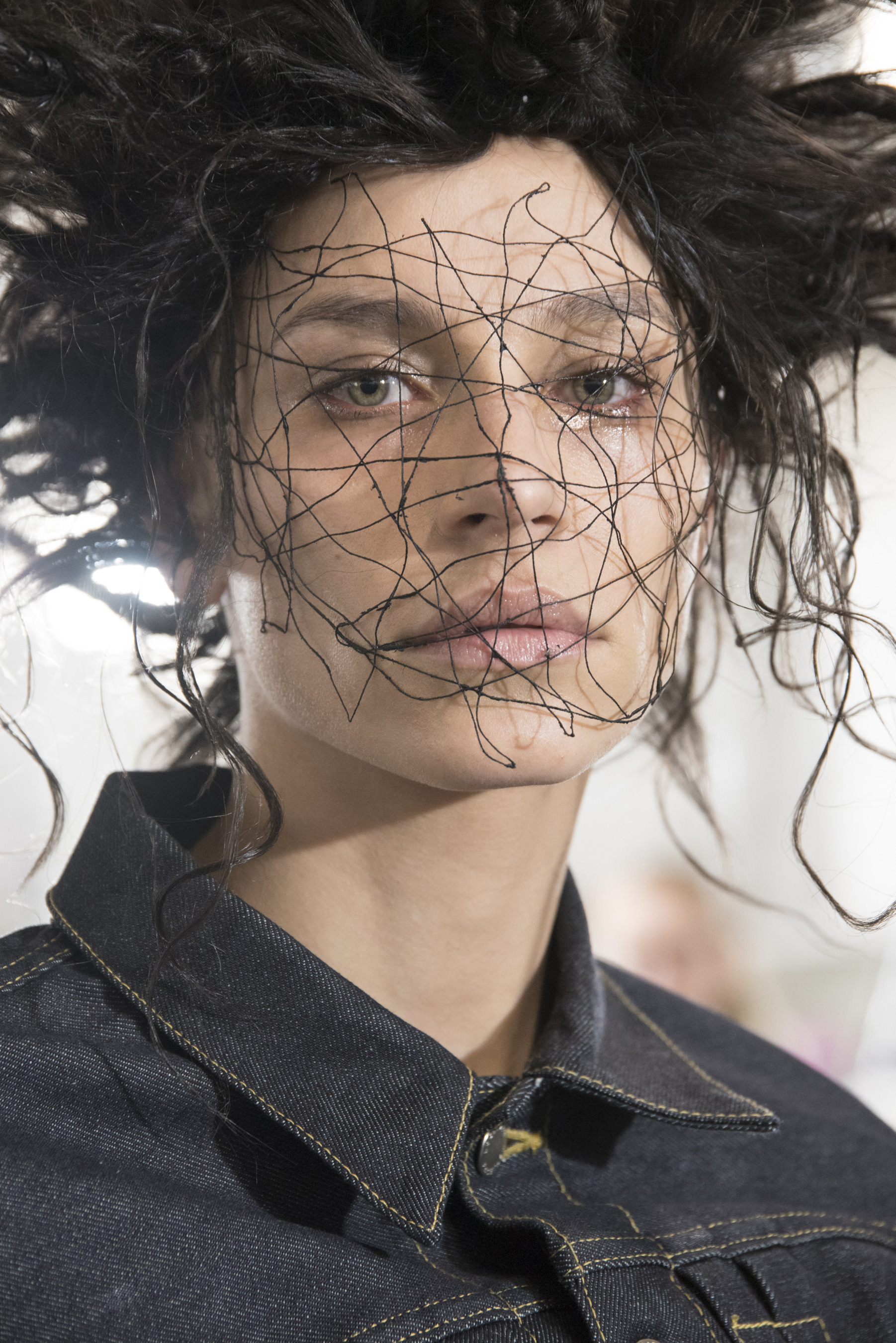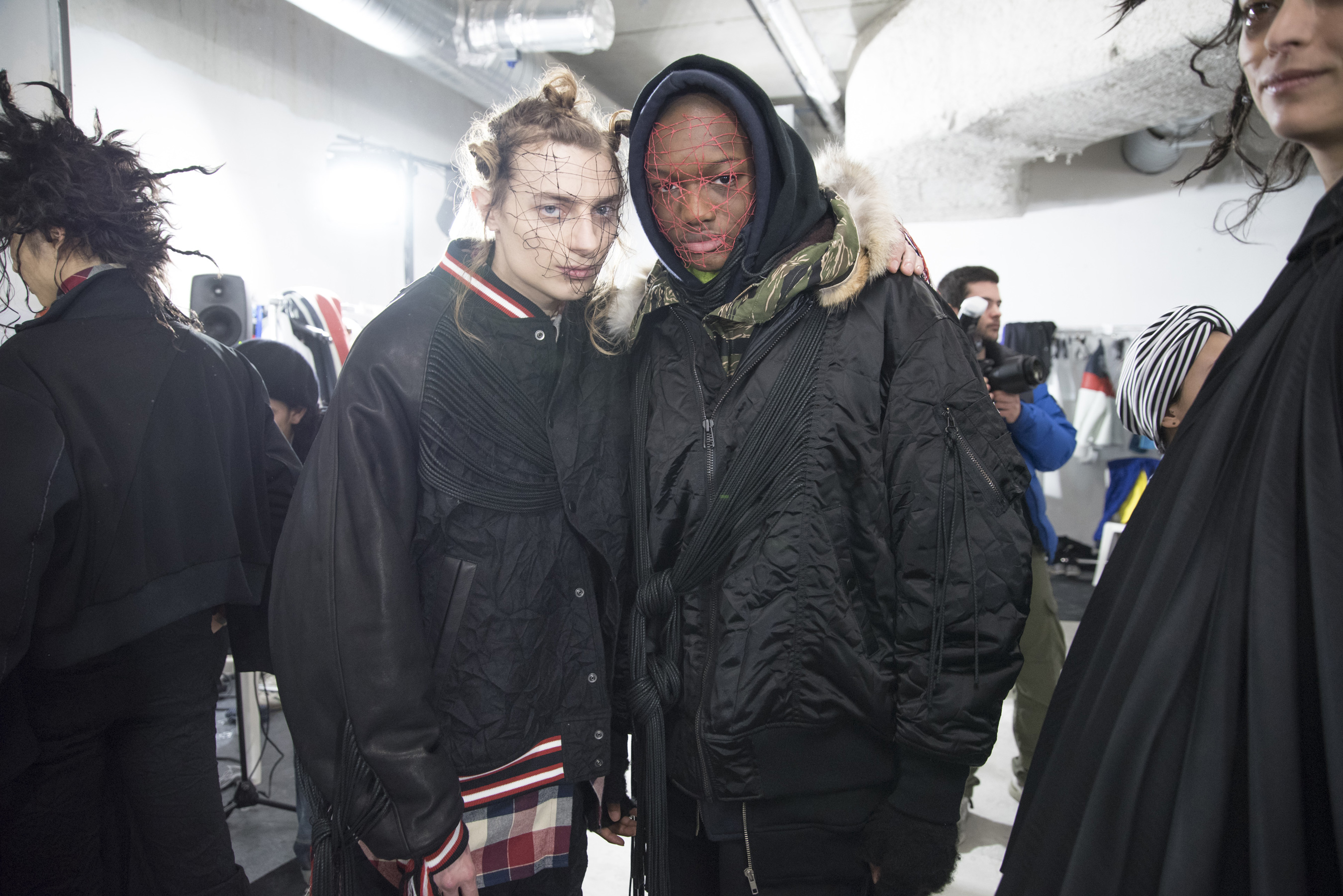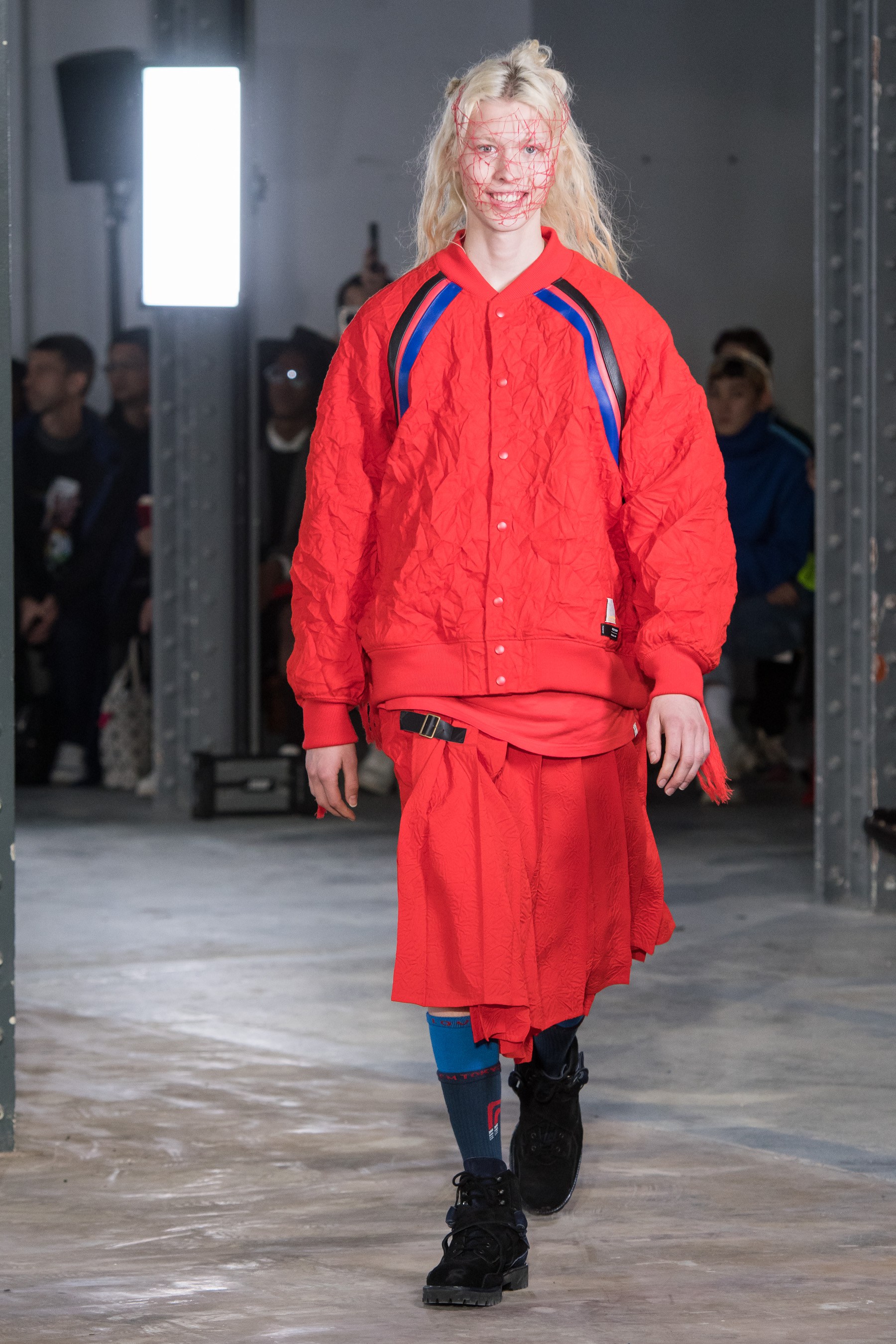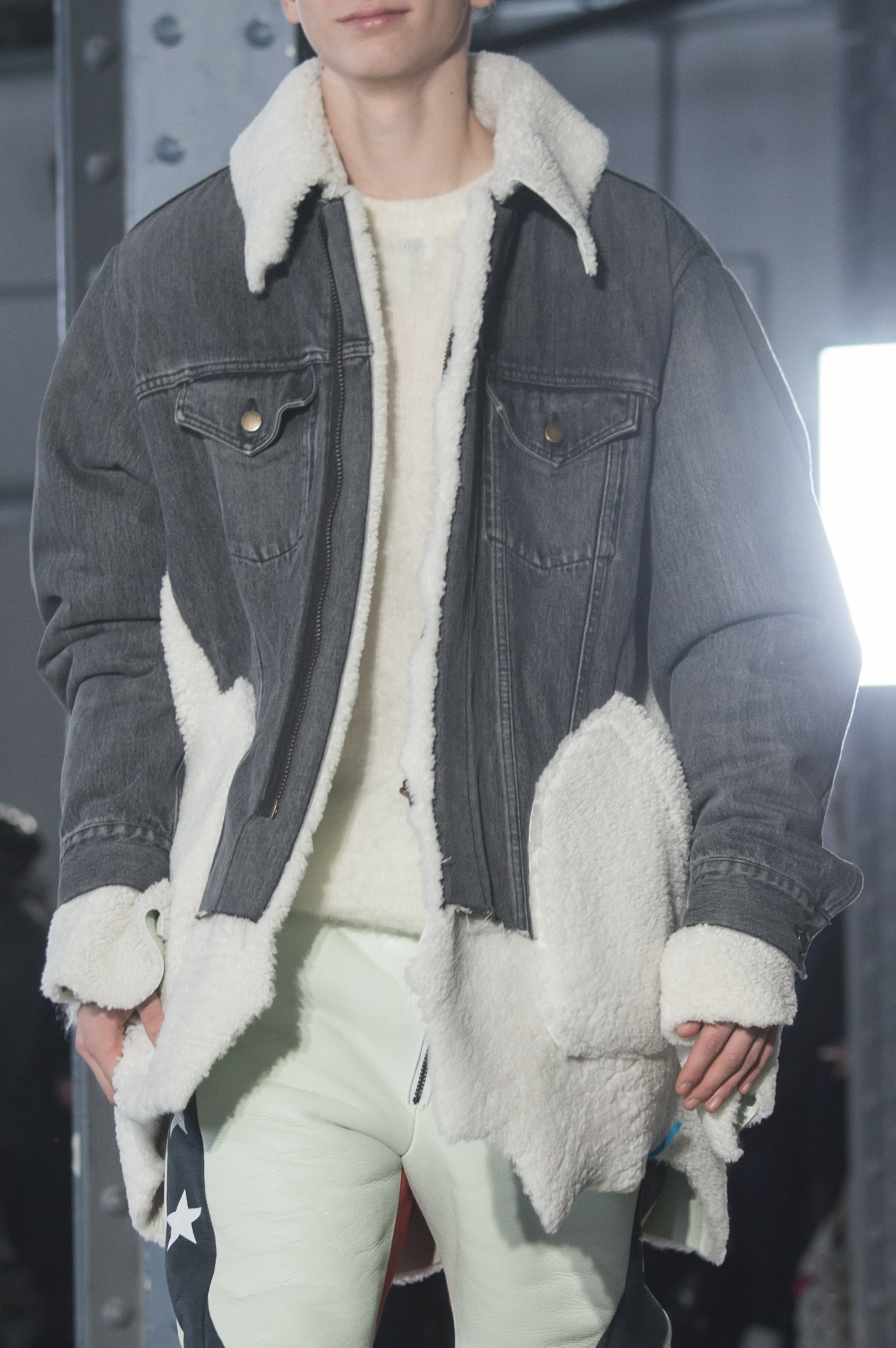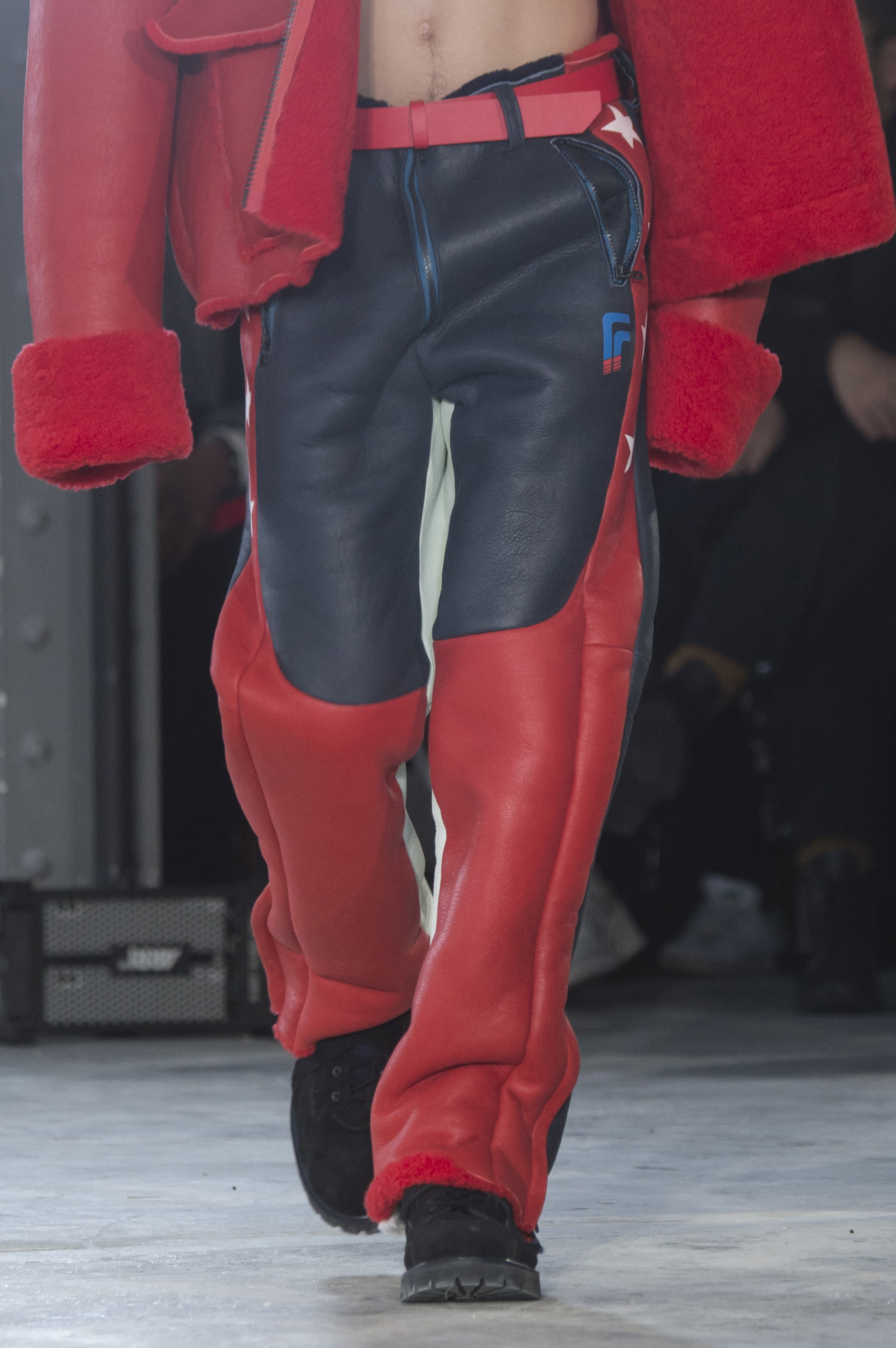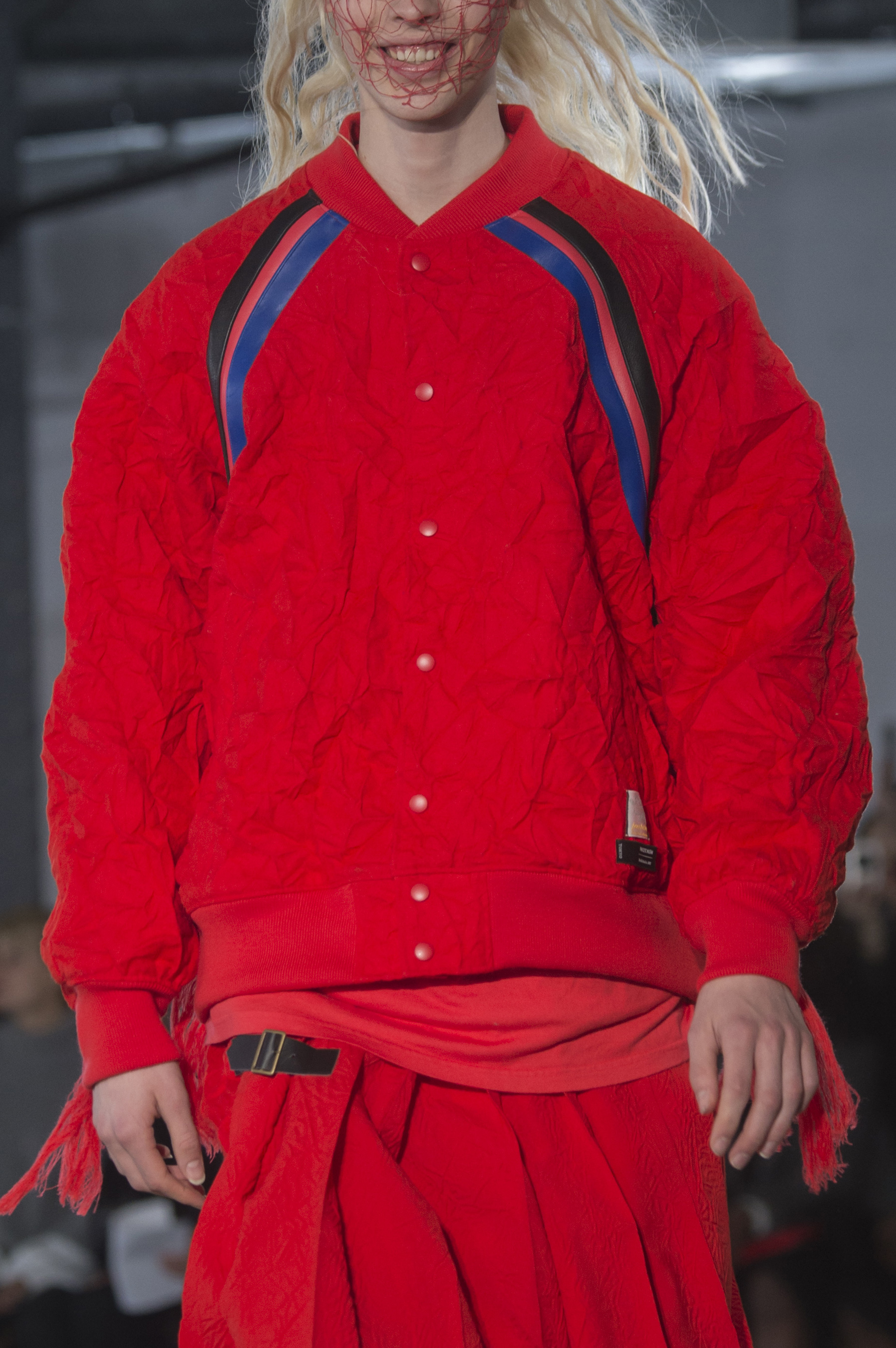Since Japanese cult label Facetasm was selected by Karl Lagerfeld as a Finalist for the LVMH Prize, the industry has been crushing on this innovative brand. Hiromichi Ochiai is the creative mind behind Facetasm’s adept layering and hybrid clothes, an avant-garde mashup of luxury and streetwear, Japanese tailoring and Western pop culture. Like the child who insists on dressing himself and does a better job than you, Facetasm puts a smile on your face and reminds you of the joy of play. The Impression’s Dao Tran chatted to the designer with the gracious help of his translator about the opportunities which propelled him onto the international stage, showing in Paris, and the future beyond high and low.
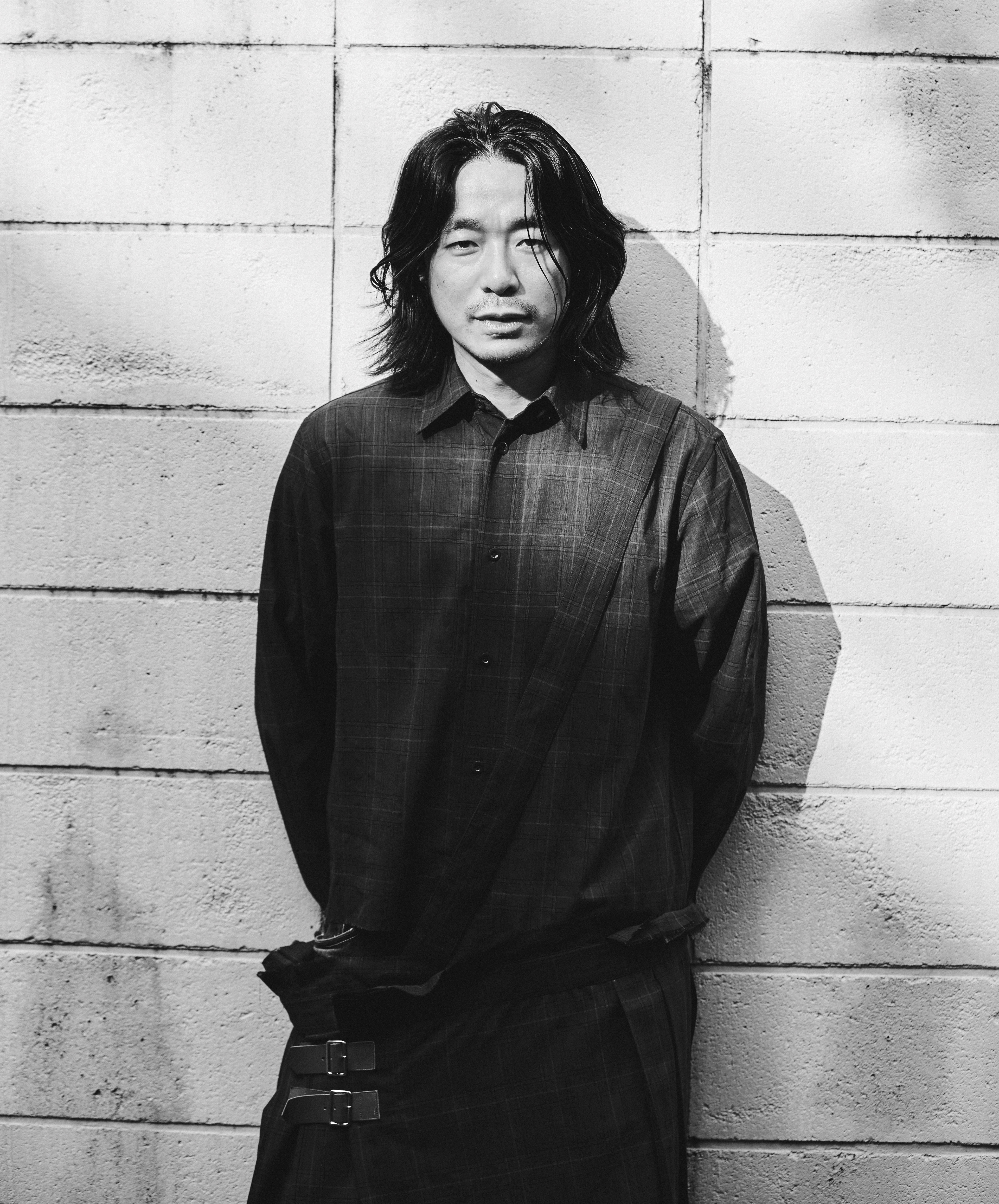
Dao Tran: I’m very excited to get to meet you and ask you some questions about your work and your brand.
Hiromichi Ochiai: Thank you very much.
Dao Tran: How did you get interested in fashion design?
Hiromichi Ochiai: I was always interested in fashion during high school. After that, I studied at Bunka Fashion College. I saw the movement of Antwerp Six and Undercover starting to make a movement in Tokyo and was interested in these two different avant-garde fashion brands. Then I started wanting to become a fashion designer when I was 20-21 years old.
Dao Tran: What happened next?
Hiromichi Ochiai: I wanted to be a fashion designer when I graduated Bunka Fashion College but didn’t know how to start off. I wanted to be in a company that is involved in fashion, but didn’t want to be in one particular brand, so I chose this company called Guildwork, which does textiles for all sorts of brands like Comme des Garçons and Undercover. There I was able to talk with designers, be involved through a lot of industries in fashion, so that was the first step of my fashion career.
Dao Tran: How did that experience contribute to your work now?
Hiromichi Ochiai: I learned a lot about textiles, lots of techniques and lots of factories throughout Japan. But the biggest opportunity for me was meeting a lot of designers with a passion towards their work and directly communicating with them.
Dao Tran: Did you also learn from the business side a little bit, how to then start your own company?
Hiromichi Ochiai: No, not at all. Only the creative part. That’s why I really struggled with the business part in the first 3-4 years when I started Facetasm.
Dao Tran: Struggle with building up the company and knowing how to make things work?
Hiromichi Ochiai: Yes.
Dao Tran: Is this something that they don’t teach you in fashion school?
Hiromichi Ochiai: At Bunka Fashion College, the courses I took were only about pattern making, textiles and designing. Nobody taught me how to do a sales campaign, how to develop your brand on the business side.
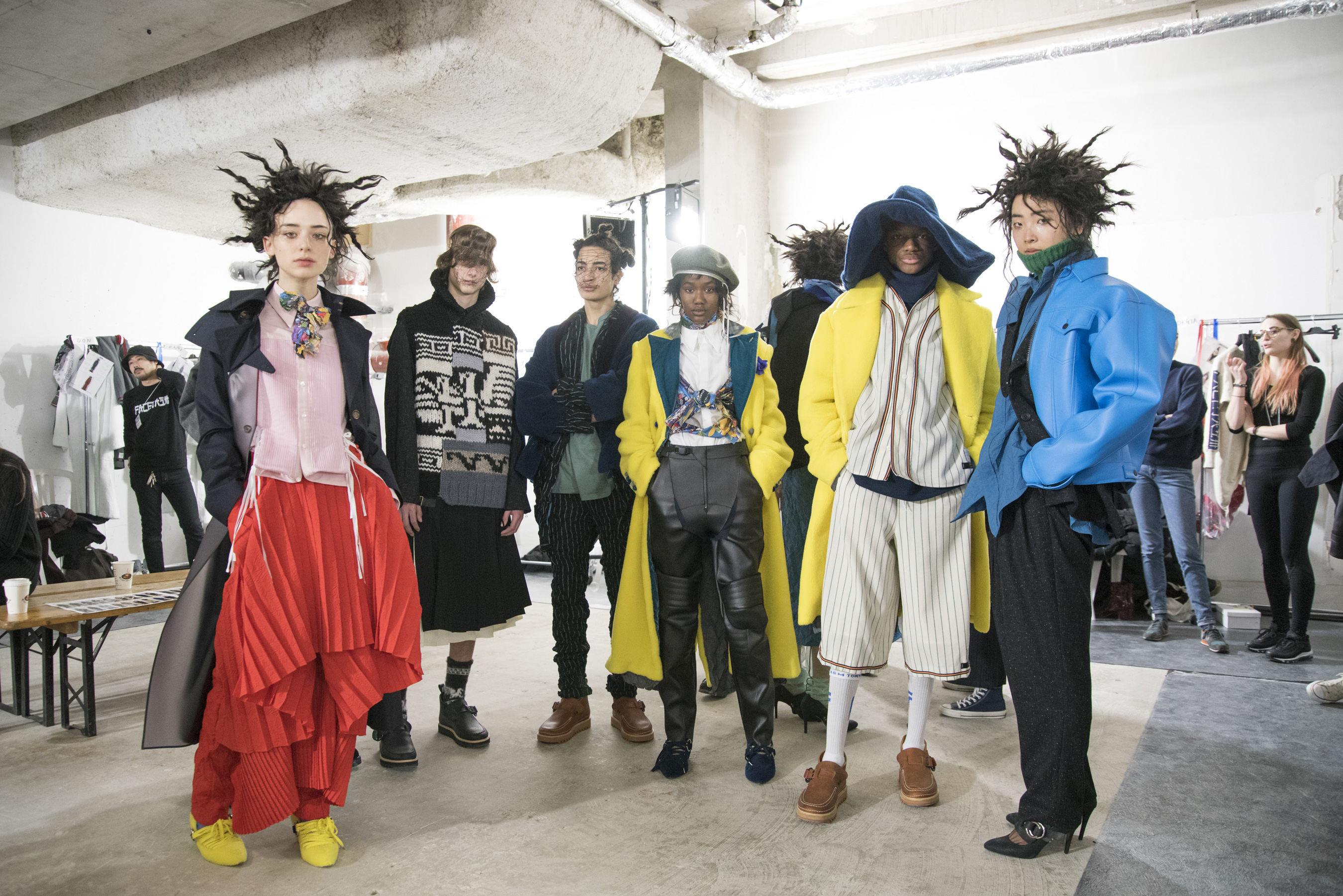
Dao Tran: So, was it learning by doing, or did you have people help you?
Hiromichi Ochiai: I learned by developing the brand. In the first 3-4 years, there were lots of people that helped me out.
Dao Tran: I think that’s interesting because the industry nowadays is not just about being creative and knowing how to make clothes, but also knowing how to sell it.
Hiromichi Ochiai: Yes.
Dao Tran: And I think a lot of brands live and die by how they manage to figure that out.
Hiromichi Ochiai: (Shakes his head in disbelief) I don’t know how I was able to develop my brand like this.
Yuichi Yoshii was the first person to call me up for Tokyo Fashion Week, and by doing fashion shows, lots of buyers could see the collection and the brand became more visible. After Giorgio Armani invited me for Milan Fashion Week, our international sales expanded. Then, being selected by Karl Lagerfeld as Finalist for the LVMH prize again made us much more visible. We also got a new PR company after getting the LVMH prize, and got into better department stores, like Barneys, Lane Crawford, Printemps. I think the LVMH prize made us into another level brand.
Dao Tran: Institutional support certainly helps.
Hiromichi Ochiai: I think my style also matches the current trend. I had been showing men’s and women’s together for 9 years and no one thought it was special, but after the LVMH prize, the brand was more visible and people started to know that Facetasm is not only showing men’s, but also women’s. I think that was really big for me.
Dao Tran: It’s definitely part of the zeitgeist, this mixture of high and low, for example, with Virgil Abloh at Louis Vuitton.
Hiromichi Ochiai: I think the high and low mix was more of a Toyko thing before, and Virgil Abloh starting at Louis Vuitton is a really good thing for the fashion world. But I think there won’t be more change from now about high and low, it’s finished and it will only go in another way in the future.
Dao Tran: Which way do you think that is?
Hiromichi Ochiai: I’m not a journalist so I can’t say, but I will show you with my designs and creations for the next season or two. I want to make a new future, go in an original direction.
Dao Tran: My sense of the brand is that every collection is always something new, there is always change.
Hiromichi Ochiai: Yes. Last season, FW18, was my fourth show in Paris, and the first three fashion shows were good, but I felt I was not expressing myself more than when I was showing in Tokyo. So last season I decided on the concept Emotion and it was a really big turning point for me. I think that was the season and the moment that I have now changed towards fashion designing.
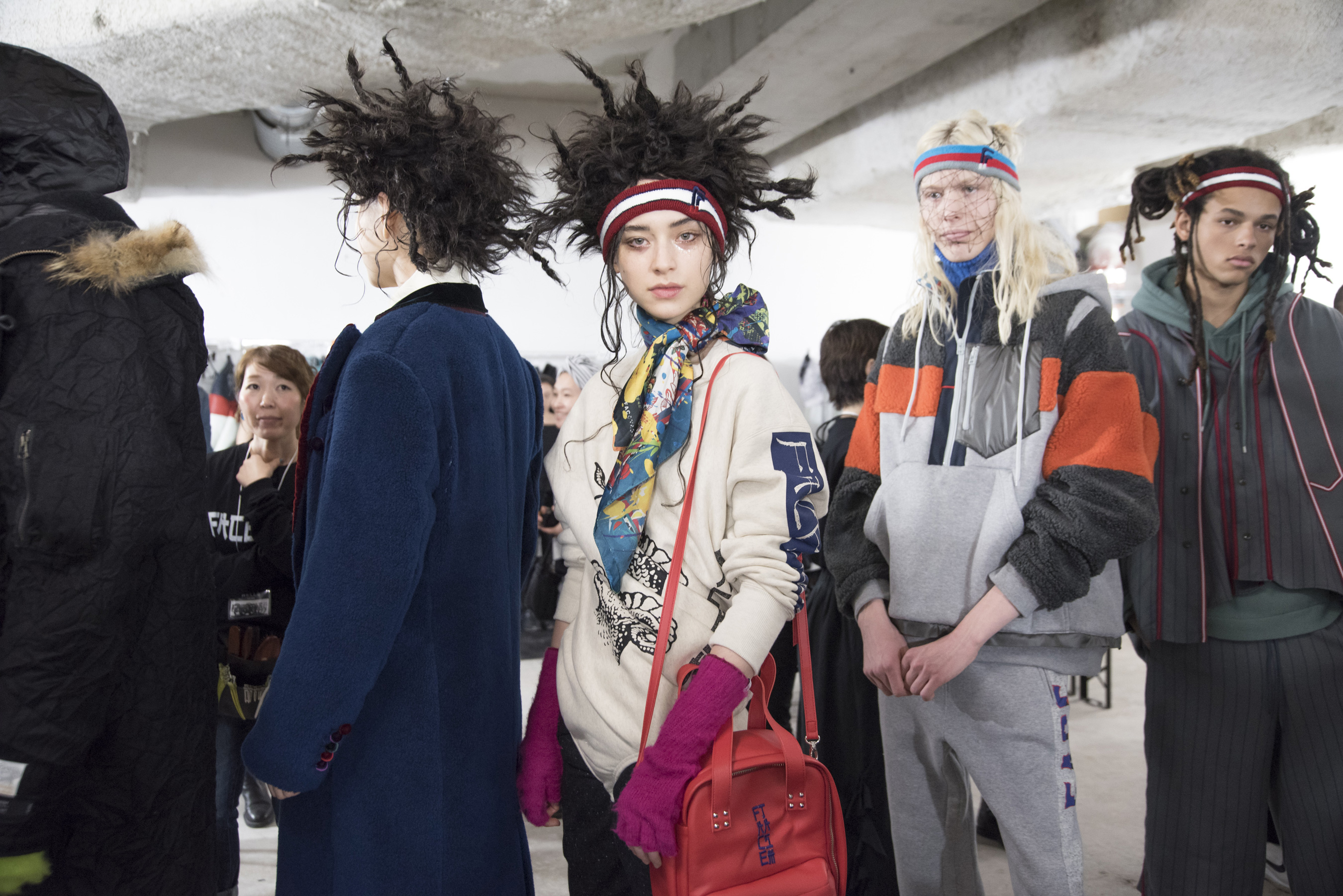
Dao Tran: Was that triggered by a personal experience or a response to current events?
Hiromichi Ochiai: Personal experience.
Dao Tran: What are your sources of inspiration?
Hiromichi Ochiai: I don’t have a particular inspiration every season, but I am always struggling to understand my own emotions, finding a way to express it through fashion, through clothes. At the same time, I think clothes need to be wearable, so I always research what the youth want to wear right now and mix it into one thing.
Dao Tran: The texts that you write to each of the shows are very poetic. How does that inform the collection?
Hiromichi Ochiai: I write the poems myself. I make a poem for every show and it’s always influenced by my personal experiences. It’s not separate from the creativity of fashion design; it’s one part of the process. After the clothes are made, I think about the poem and give it to all the team, including hair and makeup, all the people involved. After that I start thinking about the styling. So the poem is like the key word for the show.
Dao Tran: Interesting. Tell me about the one called Love.
Hiromichi Ochiai: That was FW15… and I just got married one month ago.
Dao Tran: Congratulations! Does your wife inspire you to make clothes, is she your muse?
Hiromichi Ochiai: Yes, my wife influences me, but it’s not only clothes for my wife. I always try to be clear in mind. I never think of one particular person that I want to style, I design so that everyone can wear it. I think fashion and clothes is a more pure thing. It’s always close to emotions and more romantic.
Dao Tran: What about your other romance, the first Facetasm flagship store in Tokyo?
Hiromichi Ochiai: The store is really close to our office. It used to be a gallery and was used for my first ever sales campaign, 10 years ago, so it’s a happy place for me. I’m looking forward to changing and developing the store in the next two years. When I started my own brand, I didn’t have retail experience, but I was really happy to have a flagship store where I can make my own world and show my collection pieces. It’s good to be able to present the clothes because while I always design them to be wearable, they are also very conceptual.
Dao Tran: I think with how interestingly the pieces are put together and how they can change and morph into different things, it’s important to try it on and to put it on a body.
Hiromichi Ochiai: I totally agree. I made the retail store because Facetasm clothes are sometimes difficult for people. We need to talk with them, style the clothes for them by layering and constructing the styling and so on. That’s the main reason I started the retail store and I’m happy you totally understand the brand spirit.
Dao Tran: Well, I was in a store the other day and I tried on this dress and it was great. Then the sales guy suggested that I turn it, and that was the way it was meant. But actually, you could wear it either way and I like them both. I think that’s the interesting thing about clothes that invite you to play.
Hiromichi Ochiai: Thank you.
Dao Tran: You also play with luxury and streetwear.
Hiromichi Ochiai: I am interested in both, the luxury part and the street part, too.
Dao Tran: How do you manage the price points at which you sell then?
Hiromichi Ochiai: Even if we make a casual t-shirt or sweatshirt, ‘Made in Japan’ is always going to be expensive because we’re shipping from Japan. That t-shirt could be 200€ in Europe. Right now, we can’t change that because we’re a little company. So the most important thing for me now is to be original. And I think being original, people will buy my clothes.
Dao Tran: Your combinations and layering approach are certainly original. I notice a lot of Japanese designers work more creatively with the body.
Hiromichi Ochiai: I think Tokyo is a unique city, actually Japan is a unique country because we don’t have big room for fashion and lots of cultures are mixed up. There’s lots of clothes coming from the US and Europe, and there’s kimonos that Japan created, and everything is mixed up right now and giving a new value to the clothes. I think that’s the biggest difference between European clothes and Japanese clothes.
Dao Tran: How do you think Facetasm translates for the rest of the world?
Hiromichi Ochiai: Unfortunately, I don’t know how Facetasm is perceived outside of Japan.
Dao Tran: To me, it seems like the global citizen who has a lot of influences from everywhere, who gets to travel to all these places, and picks up and appropriates in a fun and individual way.
Hiromichi Ochiai: I will say that from now on to other people, borrowing your words.
Dao Tran: [laughter] Please look forward to the next season!
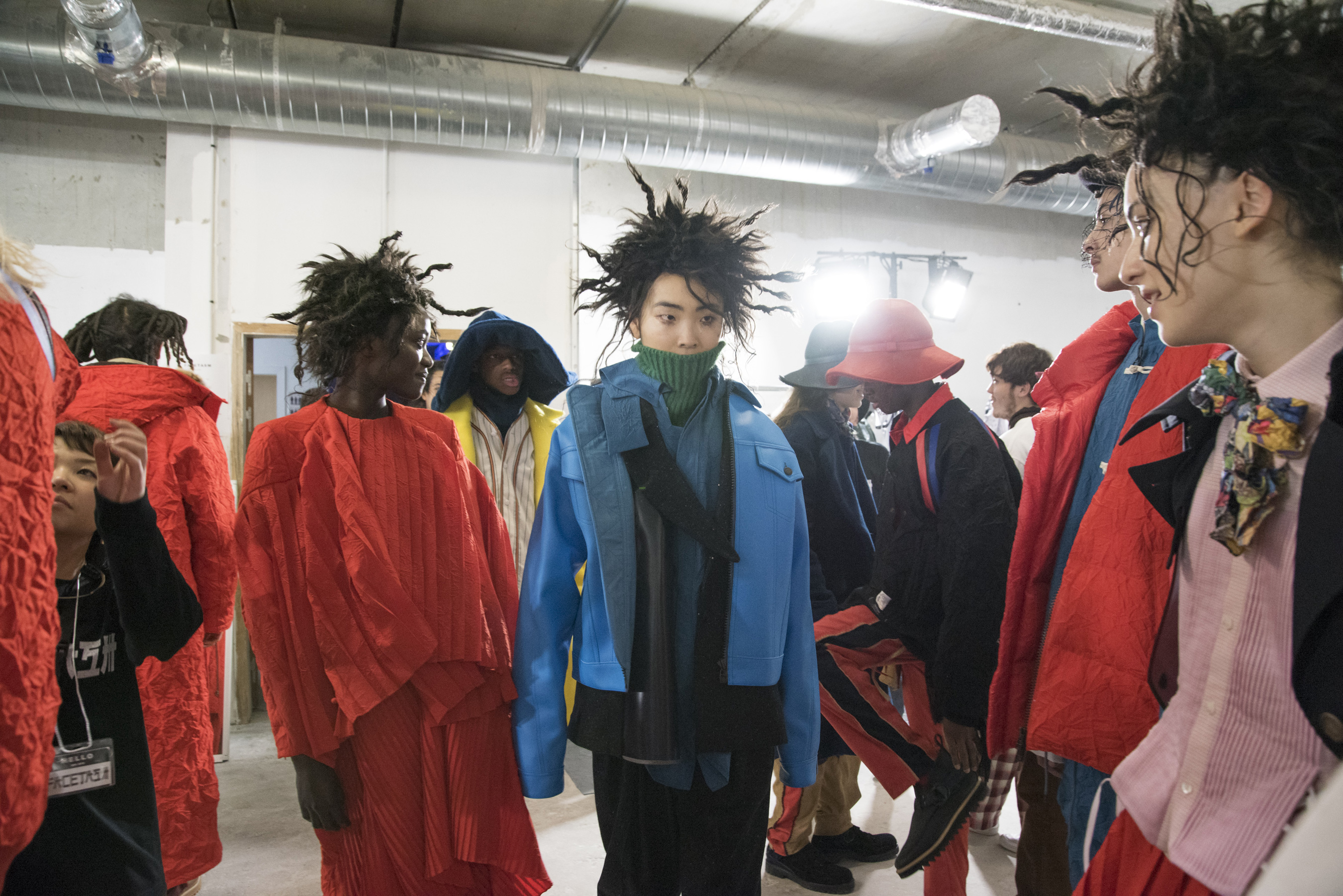
Dao Tran: I am totally curious now! What are you excited about?
Hiromichi Ochiai: I’m excited for my next fashion show in June.
Dao Tran: How much time do you spend traveling and living in Tokyo or Paris or both?
Hiromichi Ochiai: I always stay 1 month in Paris with my wife and child. After the show, I have about 10 days rest in Paris.
Dao Tran: How do you like Paris?
Hiromichi Ochiai: I think it’s easy to live in Paris and it’s really relaxing for me, so I can concentrate on the next season. I actually want to live in Paris.
Dao Tran: Everyone wants to live in Paris! Is there anyone that you have learned from?
Hiromichi Ochiai: After presenting in Paris, I really learned the difficulty to show in Paris as a Japanese designer, so I now really admire Rei Kawakubo and Jun Takahashi. I now understand that Facetasm can show in Paris because Rei Kawakubo and then Jun Takahashi started showing there and still show there.
Dao Tran: Is there anything else you would like to add?
Hiromichi Ochiai: Thank you to The Impression for this interview and for having interest in my creations and please look forward to the next collection.
Dao Tran: Thank you for your time. We definitely are!
